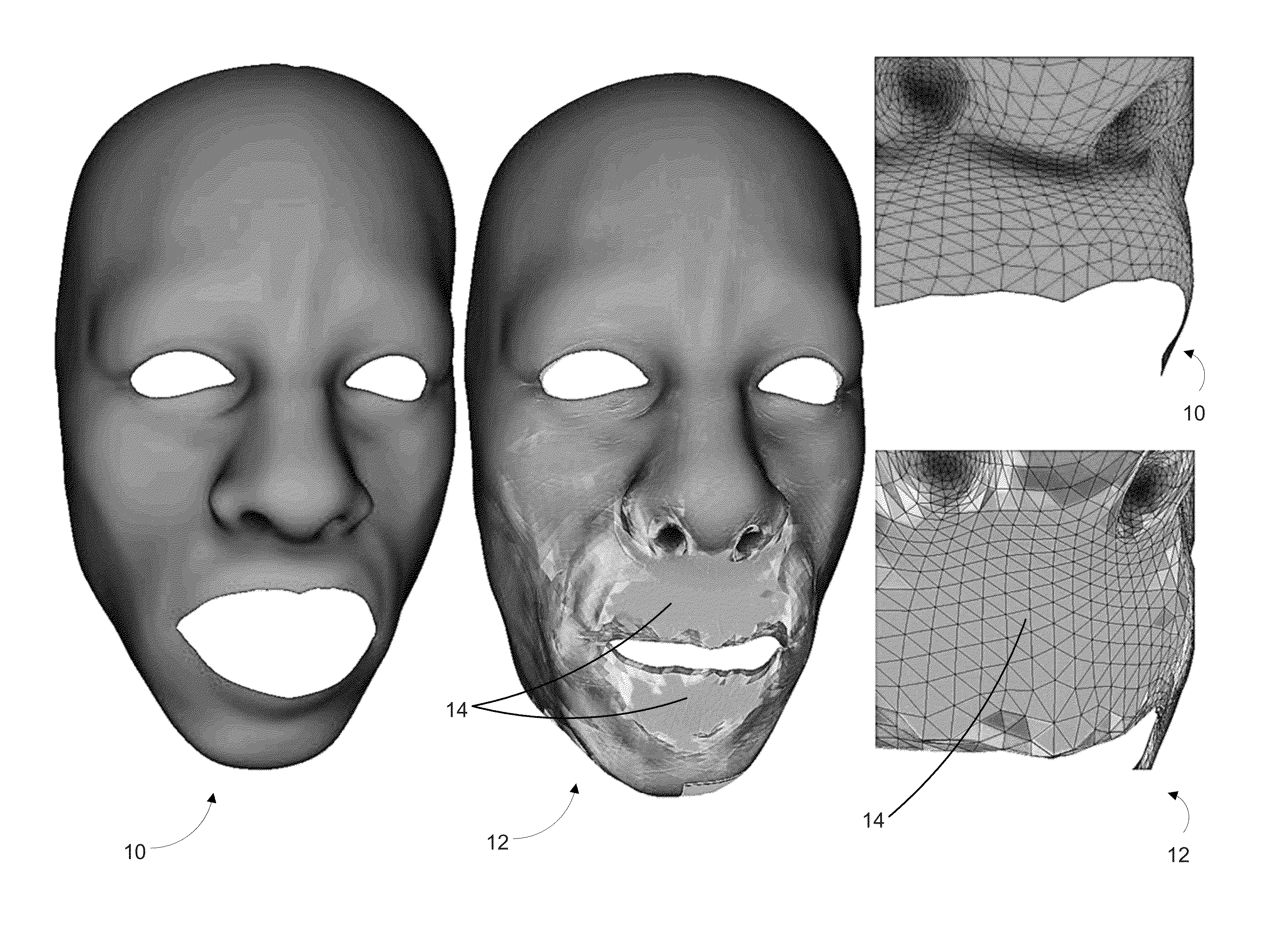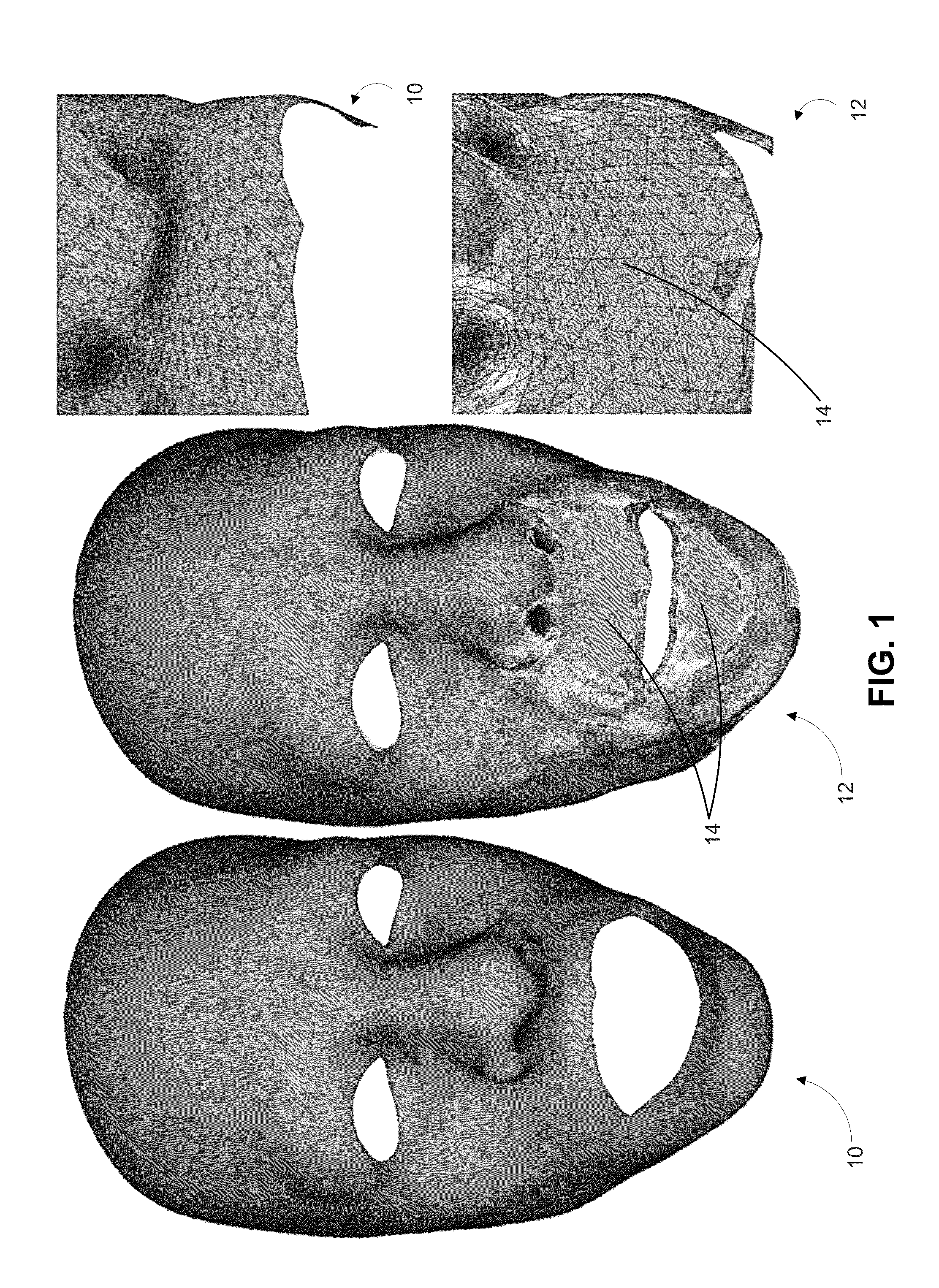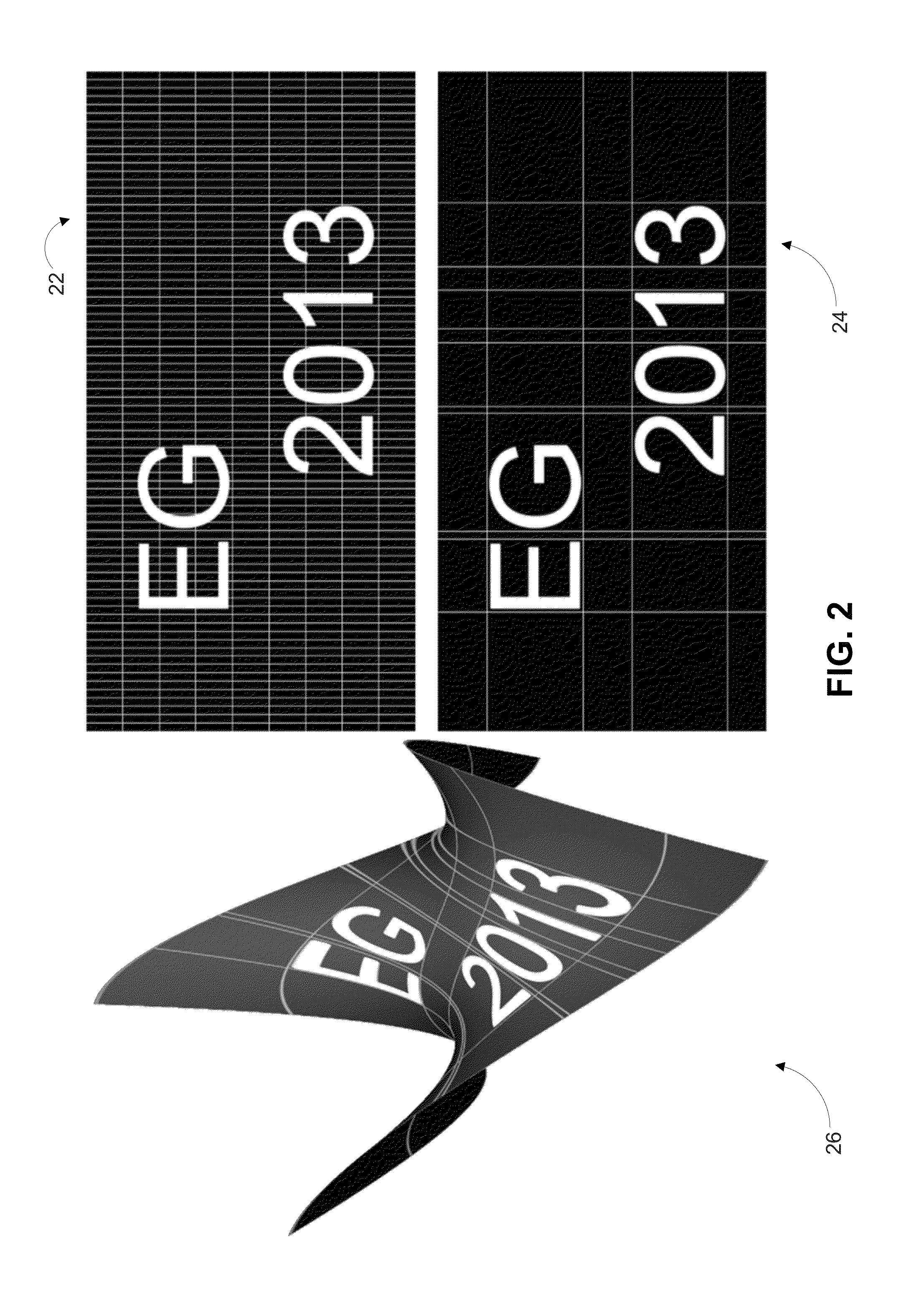Content aware texture mapping on deformable surfaces
a content and surface technology, applied in the field of computer animation, to achieve the effect of reducing distortion, minimizing distortion, and reducing distortion
- Summary
- Abstract
- Description
- Claims
- Application Information
AI Technical Summary
Benefits of technology
Problems solved by technology
Method used
Image
Examples
Embodiment Construction
[0017]A 2D parameterization of a 3D model is usually represented as a piecewise-linear mapping between a triangulated 3D mesh (x,y,z) and a corresponding triangulation on the 2D plane (u, v). One of the desired qualities of such a mapping is the minimization of distortions. When animated models are considered, such a mapping is harder to achieve, especially if the animation is not known in advance. When texture or displacement maps are applied on animated parameterized surfaces, such distortions result in an “elastic” look of the mapped detail. This disclosure introduces a technique that dynamically updates the 2D parameterization of a region of a 3D model based on the original parameterization, the 3D model in its undeformed and deformed states, and a rigidity map of the region. The parameter space of the region is warped so that the resulting region, when remapped, exhibits minimal distortions. The result is a dynamic content-aware texturing, focused on minimizing distortions in r...
PUM
 Login to View More
Login to View More Abstract
Description
Claims
Application Information
 Login to View More
Login to View More - R&D
- Intellectual Property
- Life Sciences
- Materials
- Tech Scout
- Unparalleled Data Quality
- Higher Quality Content
- 60% Fewer Hallucinations
Browse by: Latest US Patents, China's latest patents, Technical Efficacy Thesaurus, Application Domain, Technology Topic, Popular Technical Reports.
© 2025 PatSnap. All rights reserved.Legal|Privacy policy|Modern Slavery Act Transparency Statement|Sitemap|About US| Contact US: help@patsnap.com



